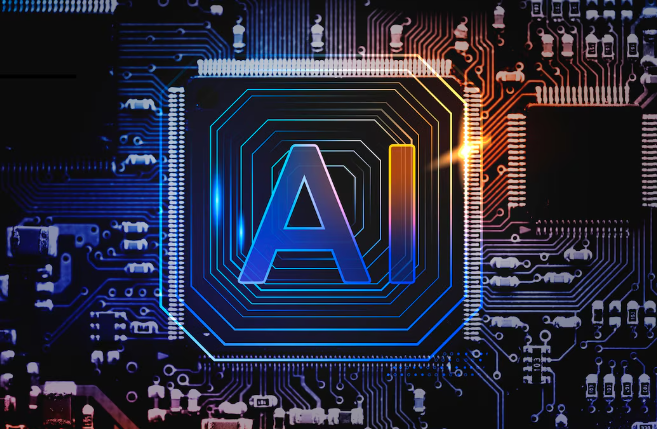
As artificial intelligence (AI) and machine learning (ML) technologies accelerate innovation, they’re also accelerating demand for energy and water. In 2024, U.S. power outages surged, with outages per customer rising by more than 50% compared to the previous year. At the same time, climate-driven disasters like Hurricanes Milton and Helene exposed the vulnerability of aging infrastructure, making prolonged blackouts more frequent and severe.
This strain is only intensifying. A recent Goldman Sachs report forecasts a 165% increase in global power demand for AI-driven data centers by 2030. And it’s not just the electric grid feeling the impact. These same data centers are becoming major consumers of water, with Deloitte estimating they could require up to 1.7 trillion gallons of freshwater annually by 2027.
Without urgent investment in infrastructure resilience, the very systems powering AI’s growth could jeopardize the essential services they depend on. To sustain progress, utilities must adopt 21st century solutions, especially when it comes to managing and protecting our most vital resource: water.
The Growing Cost of AI Innovation
Data centers have become the backbone of AI and ML advancements, delivering the high-performance computing, storage and networking capabilities needed to train, deploy and manage increasingly complex models.
But innovation comes at a cost. Data centers rely heavily on utilities for both electricity and water to maintain operations. According to a report by Deloitte, data centers are expected to consume roughly 2% of global electricity in 2025—around 536 terawatt-hours (TWh). By 2030, that number could double to 4%, or an estimated 1,065 TWh. For context, that’s enough energy to power more than 100 million homes for a year, based on an average household usage of 10,500 kWh.
As AI development accelerates, so will the strain on utility systems. To avoid overwhelming the grid and water supply, utilities will need to adopt smarter technologies that help stabilize electric load and manage water distribution more efficiently.
The Role of Water in AI Infrastructure
While energy consumption often dominates the conversation around AI, water plays an equally critical role in supporting the infrastructure behind it. Data centers require vast amounts of water to cool high-performance servers and maintain operational stability. According to Google’s 2024 Environmental Report, the company’s data centers and offices consumed 6.4 billion gallons of water—a 14% increase compared to 2022.
A recent Washington Post article brings this hidden cost into focus. Generating a single 100-word email with ChatGPT consumes just over one bottle of water. This may seem insignificant, but when scaled to 1 in 10 Americans asking ChatGPT to write an email, it would require over 435 million liters of water. To put that in perspective, it’s enough to fill nearly 175 Olympic-sized swimming pools.
While data centers are essential for digital advancements, they’re also placing increasing strain on water resources, especially in drought-prone regions. The World Health Organization estimates that water scarcity already affects 40% of the global population, and up to 700 million people could be displaced by 2030 due to drought-related challenges.
For utilities, the convergence of rising water demand and aging infrastructure further underscores the need for smarter water management. Technologies like advanced metering, real-time monitoring and predictive analytics are proving essential. By quickly identifying leaks, unauthorized usage and inefficiencies, utilities can significantly reduce non-revenue water. These efforts not only support resource conservation but also help balance the growing demands of industrial and digital sectors, ensuring water remains available for local communities.
Utilizing Advanced Metering Infrastructure (AMI)
To address water challenges posed by AI, utilities are turning to next-generation Advanced Metering Infrastructure (AMI) to modernize their systems and better manage both energy and water resources. These advanced platforms are replacing aging systems deployed in the early 2000s, bringing a new level of real-time insight into both electricity and water usage.
These AMI systems go beyond basic metering. They actively support load balancing, detect leaks and outages and enable automated responses across distributed networks. For utilities navigating the resource draw of data centers and AI technologies, AMI creates critical visibility and control at the grid edge. It also plays a direct role in reducing non-revenue water loss by identifying anomalies and enabling faster response—ultimately enhancing system performance and water conservation.
Additional benefits of next-generation AMI include:
- Enhanced Grid Edge Intelligence: Smart electricity meters act as intelligent control nodes at the grid edge. These new nodes enable efficient management of distributed energy resources (DERs) like solar panels and electric vehicle chargers.
- Improved Operational Efficiency: With increased visibility into the water distribution system, capturing accurate, real-time data makes it possible to spot trends and anomalies early, creating opportunities for efficiencies. Automated reads also remove the need for manual meter readings and truck rolls, leading to cost savings and streamlined operations.
- Advanced Outage Management: These devices can detect and report outages proactively, often before customers are aware, enhancing response times and customer satisfaction.
- Support for Distributed Intelligence Applications: Edge-level data processing allows for faster decision-making and improved electricity grid reliability.
As utilities invest in advanced technologies and AMI offerings, they gain more than just operational efficiencies. They build a smarter, more resilient foundation capable of meeting the growing demands on energy and water systems.
Leveraging AI Powered Insights
AI-driven analytics are transforming how water utilities gain insights into the health of their underground pipe infrastructure, turning massive volumes of real-time and historical data into actionable insights. Rather than reacting to failures, utilities can anticipate issues before they occur, optimize long-term planning and allocate resources more strategically. By identifying system-wide performance trends and targeting high-risk pipes, this advanced AI tool enables a shift from reactive maintenance to proactive, data-informed strategies—helping utilities strengthen resilience and better manage their pipe inventory and avoid costly pipe breakage.
The Future of AI
Today’s AI race represents a new era of unprecedented technological advancement. As AI-driven innovation continues to accelerate, it brings a pressing challenge: ensuring the sustainability of the infrastructure that supports it. With the construction of newer and larger AI data centers, the demand for power and water will continue to rise, requiring smarter and more efficient solutions. Utilities must take a proactive role in balancing technological progress with resource conservation by leveraging AMI and AI-driven analytics. The innovations will enable utilities to optimize energy and water usage, reduce waste and build a more resilient future. The future of AI isn’t just about advancing intelligence, it’s about advancing responsibly. How we navigate the AI race will determine whether we build a future that’s not only cutting-edge, but also ethical, sustainable and resilient.




